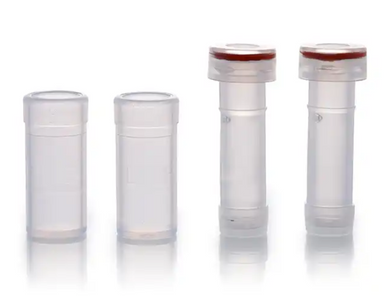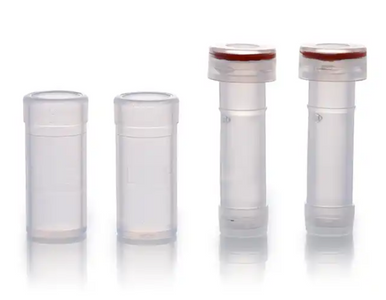Why choose filter-vials as opposed to syringes and syringe filters for HPLC
Feb 15th 2014
Check out our filter vials for HPLC here!

High-performance liquid chromatography (HPLC) is a widely used analytical technique for separating, identifying, and quantifying components in complex mixtures. The accuracy and precision of HPLC analyses depend on the quality of the sample preparation, which includes filtration to remove particulate matter and protect the instrument from damage. In HPLC sample preparation, there are two common methods for filtration: syringe filters and filter vials. In this blog post, we will explore why you would want to use filter vials as opposed to syringe filters for HPLC.
Filter vials are a newer technology that has been gaining popularity in the HPLC community due to their convenience and effectiveness. Filter vials consist of a plastic vial with a built-in filter membrane that can remove particulate matter and bacteria from the sample. The filter membrane is typically made of polytetrafluoroethylene (PTFE) or polyvinylidene fluoride (PVDF) and has a pore size of 0.2 µm or smaller. The vials are available in various sizes and are compatible with different types of HPLC instruments.
There are several advantages to using filter vials over syringe filters for HPLC sample preparation. First, filter vials are more convenient to use than syringe filters. With filter vials, there is no need to transfer the sample from the vial to the syringe filter, which can be time-consuming and increase the risk of contamination. Filter vials also eliminate the need for multiple steps in the filtration process, which can reduce the risk of errors.
Second, filter vials are more reliable than syringe filters. Syringe filters can be prone to clogging, especially if the sample contains a high level of particulate matter. Clogging can lead to inconsistent results and damage to the HPLC instrument. In contrast, filter vials have a larger filtration surface area and a lower tendency to clog, which can ensure consistent and accurate results.
Third, filter vials are more cost-effective than syringe filters in the long run. Although the upfront cost of filter vials may be higher than that of syringe filters, filter vials can be reused multiple times, reducing the cost per sample. In contrast, syringe filters are disposable and must be replaced after each use, which can increase the cost of sample preparation over time.
In conclusion, filter vials are a convenient, reliable, and cost-effective alternative to syringe filters for HPLC sample preparation. By using filter vials, HPLC analysts can save time, reduce errors, and ensure consistent and accurate results. As the demand for high-quality HPLC analyses continues to grow, filter vials are becoming an increasingly popular choice for sample preparation in the laboratory.

